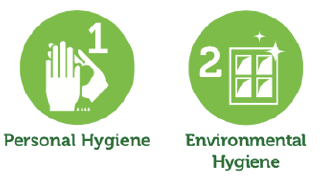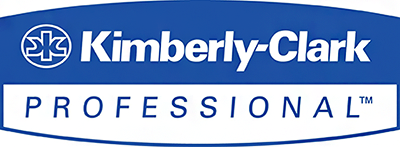C.H.E.S.S. ARTICLE - HYGIENE
C.H.E.S.S. ARTICLE - HYGIENE

Hygiene in the washroom: The Usual Suspects
Use these tips to uncover regularly occurring washroom problems.
The level of hygiene in your office washrooms is indicative of the level of professionalism of your building. Washroom hygiene has a massive impact on the way tenants view your overall building management abilities. In order to make the best impression on tenants, as well as facilitate a culture that’s in the best interest of employees, your standard of washroom hygiene needs to be exceptional.
People instinctively use all five senses to assess their surroundings. Then, their brains take it a step further and rush to judgment based on feel and think. As the Facility Manager of the building, you need to be able to assess your washrooms and identify problem areas, before they can even become a problem.
The following office-specific areas have been identified with the office washroom environment in mind and should be considered as leading indicators of problems in each area:1
Personal and Environmental Hygiene
Hygiene can have a profound impact on a washroom and can come from personal hygiene of the people who enter, work in, or maintain the building or hygiene of the building surfaces and environment.
Slosh Box Disintegration Test2

What to look out for:
• Personal hygiene amenities at desk or in bathroom
• Waste disposal bins next to toilet
• Management signs about hygiene
• Feminine care disposal problems
• Rubbish / messy floors or sinks
• Personal hygiene amenities at desk or in bathroom
• Waste disposal bins next to toilet
• Management signs about hygiene
• Feminine care disposal problems
• Rubbish / messy floors or sinks
The simplest and sometimes most obvious way of promoting workplace hygiene is to encourage a thorough and clean hand wash and dry each time a tenant or employee visits the washroom. In particular, choosing single-use hand towels will provide a significantly more hygienic clean for users. Using hand towels to dry your hands actually reduces germ count by 77%2, as opposed to using hand dryers for example. In fact, the use of hand towels in the washroom can decrease the spread of germs and bacteria, which contribute to illness2. With hand towels, illness-causing strains of bacteria are not being spread through the air from hand to hand. The friction from wiping your hands on the towels also helps to remove germs. Providing users with a far more hygienic experience in the washroom.
Odour Generators
Source of odour could impact the user experience in the washroom and generate a tenant complaint. Odors in washrooms also signal a lack of hygiene - the idea that an area may be unclean and present the possibility of coming in contact with illness-causing germs3.

What to look out for:
• Unpleasant odours
• Urine buildup around urinals / toilets
• Fragrances in bathroom that may mask odours but not treat the root of the problem
• Unpleasant odours
• Urine buildup around urinals / toilets
• Fragrances in bathroom that may mask odours but not treat the root of the problem
Proper ventilation is important in a washroom, but persistent odours can be a problem nonetheless. A new type of odor control on the horizon actually removes odors from the air by absorbing and locking them up. The Kimberly-Clark Professional* Enfresh* Technology system is comprised of a sleek housing mounted on the wall near odor sources and refill sheets that are replaced twice a week. Place one for each toilet stall, between urinals and in problem areas4.
Waste Generators
Sources of wastes associated with hygiene products only, relating directly to consumables product.

What to look out for:
• Paper left on tissue or towel rolls when discarded
• Soap dripping, ghost dispensing
• Towel tabbing
• Rubbish on floor, bins overflowing
• Paper left on tissue or towel rolls when discarded
• Soap dripping, ghost dispensing
• Towel tabbing
• Rubbish on floor, bins overflowing
Visual Appeal
Items that enhance or detract against the desired image of the building, the FMs and their tenants

What to look out for:
• First impression
• Misalignment of consumables quality to target user demographic
• Lobby should match washroom image
• Smudges on glass or finishes
• Dirty floors
• First impression
• Misalignment of consumables quality to target user demographic
• Lobby should match washroom image
• Smudges on glass or finishes
• Dirty floors
Knowledge
Any knowledge-gap relating to hygiene management, cleaning processes, consumable management, washroom maintenance, environment and sustainability.

What to look out for:
• Sensor-based temperature controls in place to conserve energy
• Recycling program in place
• Sustainability certification requirements are being taught, met
• Cleaning schedules / checklists are followed
• Sensor-based temperature controls in place to conserve energy
• Recycling program in place
• Sustainability certification requirements are being taught, met
• Cleaning schedules / checklists are followed
Make your first move towards a more hygienic washroom
Keeping your washrooms in pristine condition is a lot more difficult than it seems, and we understand that. Kimberly-Clark Professional* is in a unique position to provide health and wellness solutions, benchmarking tools and behavior change programs that help office workers to feel clean, refreshed and rejuvenated.
As a first step, we recommend you determine exactly how effective your washroom strategy is by taking the C.H.E.S.S. Test. If you want to learn more, simply book an appointment with us and we’ll send a Kimberly-Clarke Professional* representative to give you a FREE consultation.
As a first step, we recommend you determine exactly how effective your washroom strategy is by taking the C.H.E.S.S. Test. If you want to learn more, simply book an appointment with us and we’ll send a Kimberly-Clarke Professional* representative to give you a FREE consultation.
Reference:
1. G584_KCP Customer Experience Training Kit Module 3_1b
2. JetAirPPT_v6
3. Odor control journey
4. Odor Control System Performance in lab and in field
1. G584_KCP Customer Experience Training Kit Module 3_1b
2. JetAirPPT_v6
3. Odor control journey
4. Odor Control System Performance in lab and in field
Want to read more? Please contact us.





